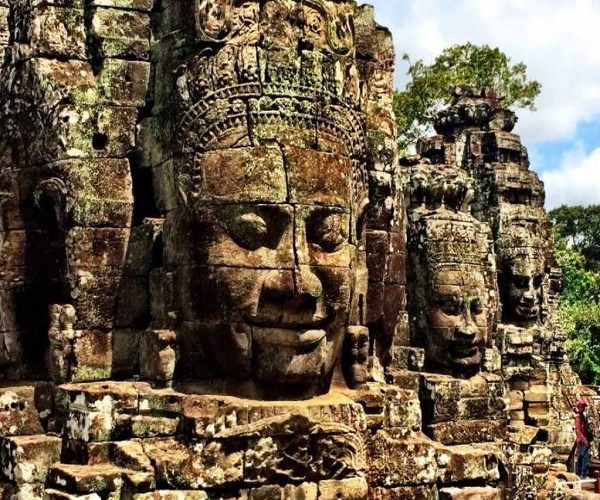Notwithstanding the fact that the sculptural elegance of ancient Devuni Gutta temple that resembles world-famous Angkor Wat structures of Cambodia, there is little effort to explore its hidden history and conservation. The sandstone sculptures of Devuni Gutta temple in the thickets near Kothur village under Mulugu Mandal in Jayashankar-Bhupalpally district, 210 kms northeast of Hyderabad, came to light in 2017. Prior to that, it was only known to the Adivasis.
Thanks to the local history buffs because of whose endeavours the hidden marvel caught the imagination of the people and the State Archaeological Department. The architecture of the temple gives an impression that it refers to the times of Vishnukundina, the imperial that controlled Deccan, Odisha and parts of southern India during the 5th and 6th centuries.
The sculptural elegance of the temple corresponds to that of Udayagiri and Scandagiri of Odisha, and Amaravati in Andhra Pradesh. One of the carvings inside the sanctum sanctorum has the sculpture of Tathagata. It’s no exaggeration to say that each of the frames in the temple has something to say of yesteryears.
Even though the local historians believe that the sandstone sculptures, shaped in square and rectangle blocks smoothened with lime mortar, of the temple are ancient than Angkor Wat which was built in mid-12th Century. Before, how old the Devuni Gutta temple is determined, the task at hand is to protect it.
The Siva Lingam in the temple is already missing. The locals say that it was stolen by some miscreants a few decades ago. With no proper maintenance, the temple is in the ruins. The rainwater is taking a toll on the lime mortar filled in the gaps of sandstone blocks.
Even though the temple is attracting the architecture and history researchers, the State Archaeological Department has so far turned a blind eye to initiate steps to conserve it. It appeared like that authorities will take up the rejuvenation of the temple in 2017 when the Archaeology and Museums Department Director NR Visalatchi sought a report on it, but there was no progress thereafter.
Against this backdrop, Dr Corinna Wessels-Mevissen, a German whose expertise extends to iconology of Indian sculptures and mediaeval temple architecture, had been on an observation tour to the temple last year.
Latest to fall to the beauty of the temple is a professor of an architectural historian at the Welsh School of Architecture, Cardiff University, Adam Hardy. He also heads the Practice, Research and Advancement in South Asian Design and Architecture (PRASADA), a centre devoted to the architecture, visual arts and material culture of South Asia and its diaspora.
Andy Hardy guided by Warangal-based tourism consultant Aravind Arya Pakide visited the temple. “Devuni Gutta is one of those extraordinary temples India have. Based on the style of the architecture, the temple belongs to the 6th century. It’s high time the Archaeological Department take necessary steps to protect the temple which is beginning to collapse,” Andy Hardy told #KhabarLive.
Aravind Arya said: “The temple has huge tourism potential provided facilities. The naturally formed pond, which is close to the temple, is an added attraction.” Those interested to experience the pristine beauty of the temple can contact Aravind Arya on his mobile number 7097270270 for information. #KhabarLive







